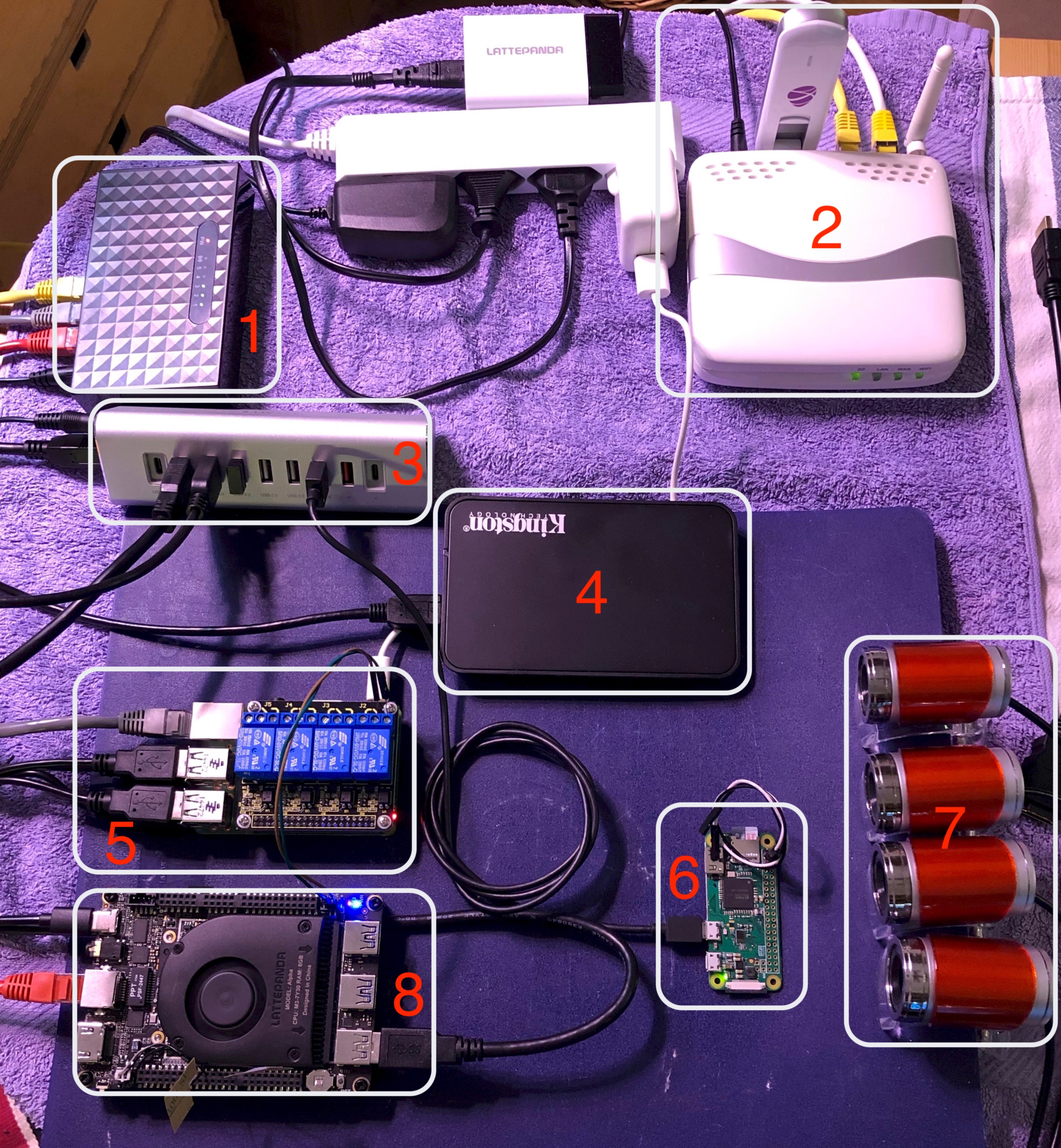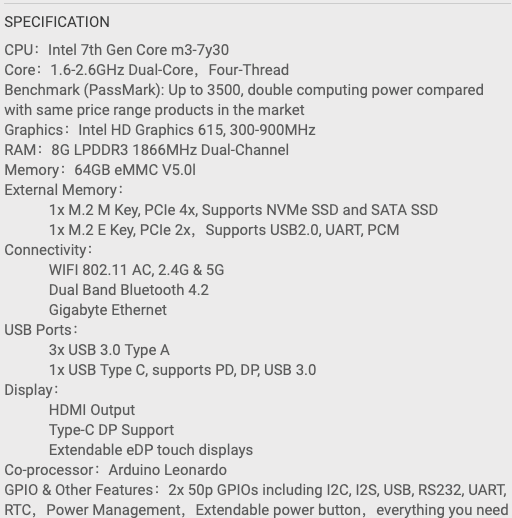I had a plan to create all new remote Rig already during 2018, but due to some problems to get parts to it (the main computer) this has now been moved to be “The Project – 2019”.
The Idea:
* Fully remote controlled – power supplies included
* Windows 10 based main computer
* RaspberryPi based controll computers
* Video monitored, all led-lights, displays, others
* Enough computing power for realtime AirSpy R2, 10MHz bandwith
* Fully internal networking solution for standalone use
* Enough USB slots for:
– Four USB3 connected radios
– Six USB2 connected radios
– External keyboard and mouse
– External USB3 SSD for full system clone
– Spare USB3 & USB2 slots for later use
* At least 20/20mbit internet connection
After several iterations, tests and re-planning I finally had a system for real-life PoC (Proof of Concept) that I could use for testing all the aspects of my idea.
There are still some parts missing from the Rig, like display and another USB-hub, but with the current configuration it was possible to test the raw computing power and usage of the system to find out if there are huge problems, or not!
Here is the system under testing and some details about the components used and for what are they for:

1: 10/100mbit standard ethernet switch
2: 3G/4G/Broadband router with WiFi base station
3: USB3 HUB with external power supply (3xUSB3 & 4xUSB2)
4: External USB3 240GB SSD for full system clone/backup
5: RaspberryPi 3 for Remote access, Webcams & Power control
6: RaspberryPi Zero W, Remote keyboard and Remote access backup
7: Webcams for remote video feed
8: Lattepanda Alpha 864 Intel based SoC computer
Notes:
Internet connection is deliverd via either 3G/4G mobile broadband or via other broadband connection (ethernet). The router has fully configured SOHO router system with firewalls, access control and other basic services.
The USB HUB is capable of hosting three USB3 devices and four USB2 devices. There is also USB2 & USB-C power output (no data) available in case there is a need to power some equipments, like fan’s, lights or so. In this PoC there is only one HUB connected, but in the final configuration there will be two of them.
The external SSD drive is mainly for full clone of the Lattepanda Alpha Windows 10 system as when this system is finally installed to the remote location there is no easy physical access to the system, so if something bad happens one must be able to remotely restore the system – by having a full clone of the system it is possible to boot from that clone and fix the main SDD with fresh copy of the system.
The RaspberryPi 3 handles the most important part of the remote access. Via it all connections will be opened so that one can remote access and control all the local computers safely via Internet using SSH. The RaspberryPi 3 also handles the power supplies of the USB HUB’s and Lattepanda Alpha with the Relay Card installed to it.
The RaspberryPi Zero W handles the remote keyboard functions for Lattepanda Alpha. For full remote control one must be able to enter commands via keyboard even if the system is fully halted – or access to Lattepanda BIOS is needed. With the RaspberryPi Zero W it is possible to mimic external keyboard connected to the Lattepanda Alpha and because it is a linux computer one can SSH into it and remotely give commands as “a remote keyboard”. Very crusial for this project as one must have access to the Lattepanda Alpha what ever happens.
Four webcams are for “remote eyes” to the system.
Using VLC one can see the system remotely to check the status of the system/led’s and also to see the screen of the main computer enough to handle possible system problems when there is no remote access available to the main computer via RealVNC, Anydesk or Microsoft Remote Desktop (RDP) – even if the connection to the Windows 10 is lost because a BSOD, Windows crashed, system down for other reason or whole computer halted while booting.
And the main computer, a Lattepanda Alpha 864. A very powerfull SoC (System on Chip) computer capable of handling the load of a new MacBook Pro. It has a Windows 10 OS installed as that is the most supported OS with SDR softwares and devices currently available.
Specs for LPA864 are:
